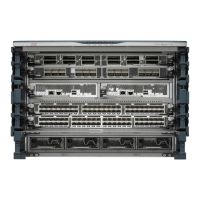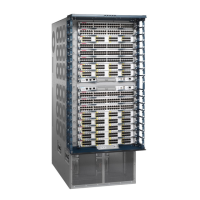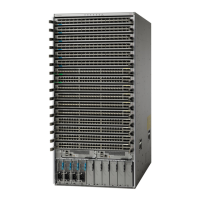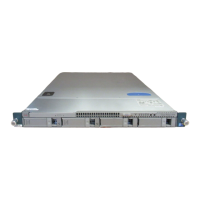Stability hazard. The rack stabilizing mechanism must be in place, or the rack
must be bolted to the floor before you slide the unit out for servicing. Failure to
stabilize the rack can cause the rack to tip over.
Warning
Statement 1048
• Verify that the bottom-support rails have been attached to the lowest possible RU in the rack or cabinet
and there is 13 RU (22.7 inches [57.8 cm]) of space above the rails to install the chassis.
• If there are other devices in the rack, verify that the devices that are heavier than this chassis are installed
below where you are going to install the chassis and lighter devices are installed above where you are
going to install the chassis.
• Verify that the data center ground is accessible where you are installing the chassis.
• Verify that you have the following tools and equipment:
• Mechanical lift capable of lifting the full weight of the chassis and its installed modules
Fully loaded, the chassis can weigh up to 384 lb (174.2 kg). You can lighten the
chassis for easier moving by removing its power supplies, fan trays, and fabric
modules. To determine the full weight of the chassis and the appropriate weight
rating for the mechanical lift, see Weights and Quantities for the Chassis, Modules,
Fan Trays, and Power Supplies, on page 146.
Note
You must use a mechanical lift or floor jack to elevate a switch weighing over
120 pounds (55 kg).
Caution
• Phillips-head torque screwdriver
• Bottom-support rails kit (shipped with the accessory kit)
Part of this kit has already been used to install the bottom-support rails. You should still have 12
12-24 x 3/4-inch or M6 x 19 mm Phillips screws, which are required for attaching the chassis to its
rack.
You should also have at least two persons to push the chassis and one person to guide the chassis when you
slide it into the rack.
Note
Cisco Nexus 7710 Switch Site Preparation and Hardware Installation Guide
OL-30452-01.22
Installing the Chassis
Installing a Chassis on a Rack or Cabinet
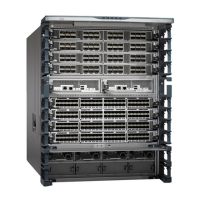
